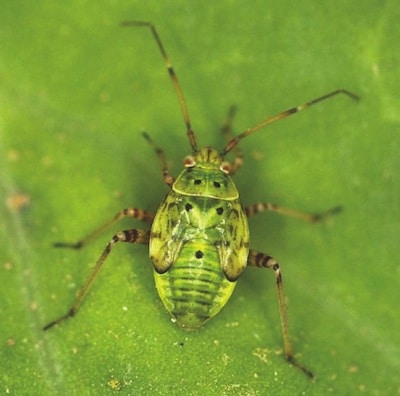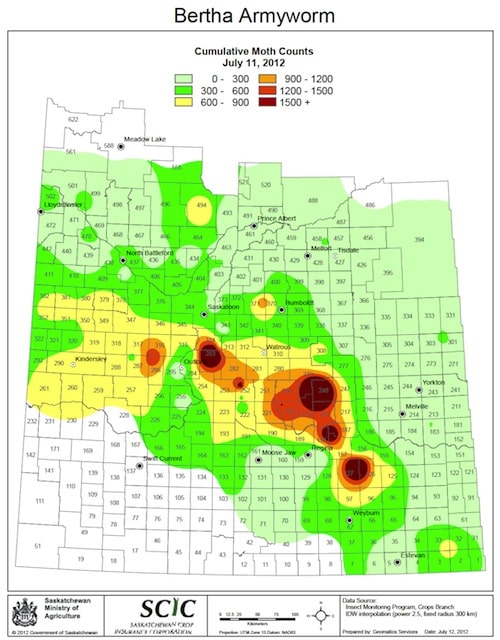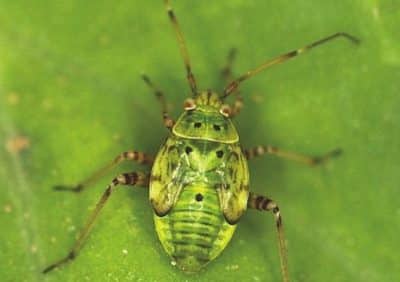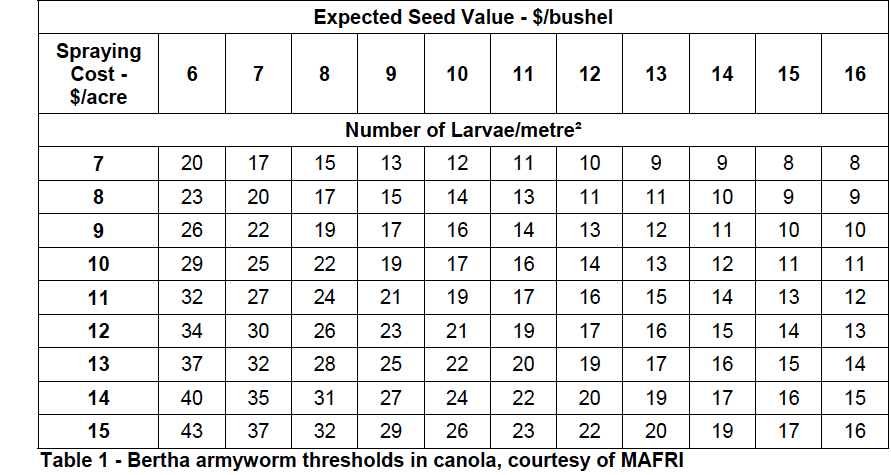
Lygus. Include later instars — the ones with black dots on their back (see the photo) — as well as adults when counting lygus for economic thresholds. Click here for more photos and threshold tables. Sticky sap droplets on the plant and missing pods up the raceme are a sign of possible lygus feeding, but if they’re not showing up in sweep nets at numbers above thresholds, then spraying may not be needed. Economic thresholds outlined on the tables will be in the range of 7-10 per 10 sweeps. Healthy hybrids may be able to handle 10 or more without any yield loss. Lygus can produce two generations per year in the southern Prairies, and the second generation is anticipated any time now. Lygus take 5 to 14 days to go through their 5 molting stages. Instars 3, 4 and 5 have the black dots. Click here for a comprehensive article from Alberta Agriculture. Note: Stickiness in the crop can also be caused by aphids, leafhoppers and cabbage seedpod weevil.
Bertha trap count caution. Some canola fields saw heavy bertha armyworm feeding last year, even though trap counts in the area showed very low levels. This is possible. The trapping system is designed to identify fairly large regional outbreaks, but the number of traps deployed may not be sufficient to pick up smaller localized outbreaks. Traps counts are very high in some parts of Manitoba and Saskatchewan, which is a sign of elevated risk in those areas. Some fields are being sprayed already. If trap counts in your area are very low, fields still need to be scouted to identify localized outbreaks.

Zebra caterpillars have been spotted in high numbers in small areas within some fields. Zebra caterpillar (Melanchra picta) can have a very clumped distribution, being extremely numerous on certain plants or certain parts of a field, and uncommon through the rest of the field. So scout fields thoroughly and don’t make assumptions based on a cluster of larvae you may find in a specific area. There are no economic thresholds for zebra caterpillar in canola. It has not been considered of pest status. Populations this year are higher than normal, and because they will feed high on the plant and are brightly coloured caterpillars this is something that is easy to notice in canola. Consider the overall loss, which will usually be very low. If the spray decision is made, spray the patch only. (See the quiz above for a photo.)
Other insects: Growers in southern Alberta are still finding diamondback moth larvae. Cabbage seedpod weevil numbers seem to be dropping off, but a few fields were sprayed this week.


